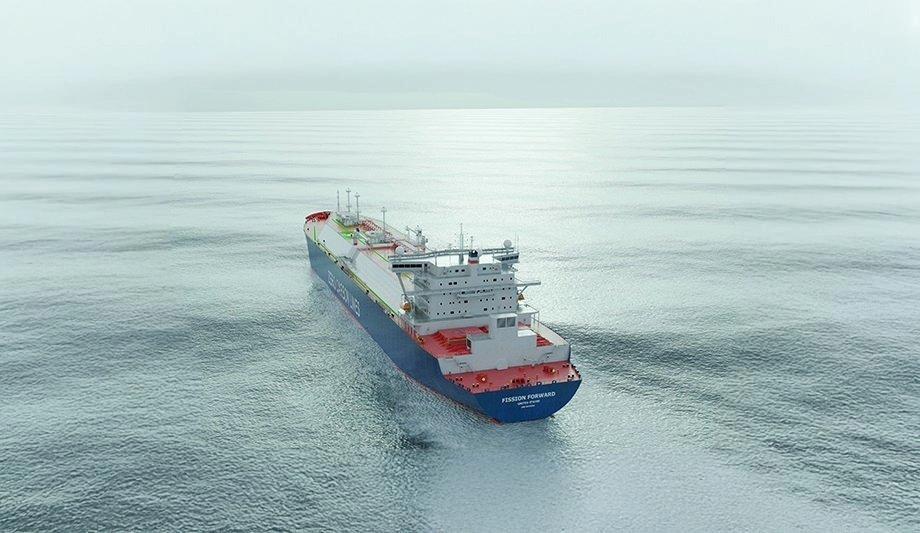ABS released its latest report into the potential of advanced nuclear technology for maritime applications, with a study of a small modular reactor on a standard liquefied natural gas (LNG) carrier.
Feasibility and safety
The transformational impact of a high-temperature, gas-cooled reactor (HTGR) on the design, operation, and emissions of a 145,000 m3 LNG carrier design was modeled by ABS and Herbert Engineering Corporation (HEC).
The study is designed to help the industry better understand the feasibility and safety implications of nuclear propulsion and to support future development projects.
Heat and energy management
There would also be no requirement to refuel, although the HTGR technology would need replacing
The study provides ABS and the industry with important information on heat and energy management, shielding, weight distribution, and other design features for an LNG carrier with nuclear propulsion.
This will assist in the identification of design issues that will inform future Rules development. The study also found that HTGR technology allowed faster transit speeds and offered zero-emission operations.
There would also be no requirement to refuel, although the HTGR technology would need replacing approximately every six years.
Operational advantages
"While this technology is well understood on land, adapting it for marine application is in its infancy. However, this study and the other research we have carried out highlight its significant potential to address not only shipping’s emissions challenge, but also to deliver a range of other operational advantages to the industry," said Patrick Ryan, ABS Senior Vice President, and Chief Technology Officer.
He adds, "ABS is committed to helping the industry evaluate its suitability for use in a range of use cases and LNG carriers are just one of a range of potential applications we are exploring."
Nuclear-propelled LNG carrier
ABS launched the industry’s first comprehensive rules for floating nuclear power plants
The study shows a nuclear-propelled LNG carrier would have specific design features, with reactors placed at the rear of the vessel and batteries forward of the location occupied by fuel tanks on current vessels and a reinforced hull. Given design constraints, the HTGR technology would only be suitable for larger LNG carriers.
The report is the latest in a succession of initiatives from ABS designed to address challenges to the adoption of nuclear technology at sea. Recently, ABS launched the industry’s first comprehensive rules for floating nuclear power plants at a forum for nuclear industry leaders held jointly with Idaho National Laboratory (INL).
Reactor technologies
Held at ABS’ world headquarters in Texas, USA, the event saw presentations on the latest reactor technologies from major companies and the publication of a detailed study from ABS and HEC modeling the design, operation, and emissions of a floating nuclear power plant.
The U.S. Department of Energy (DOE) has awarded ABS a contract to research barriers to the adoption of advanced nuclear propulsion on commercial vessels.
